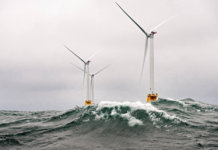Despite the current economic turmoil, the global trend toward greater renewable energy deployment points to a sustained period of wind turbine investment, with equipment purchases expected to more than double by 2025, according to a study released by IHS.
Investment levels for this year will fall below their historic 2008 high, but investment will increase from $30 billion in 2010 to more than $68 billion in 2025. This trend corresponds with worldwide installed wind capacity rising from 188 GW to over 940 GW during this forecast period, according to the study.
Key features of the market's growth-drivers cited in the study include strong long-term renewable electricity demand in the global market, combined with intensifying competition between Asian and European suppliers, technology shifts toward larger turbine procurement and buy-side consolidation.
‘Industry restructuring is under way as a response to slumping demand, with positive long-term implications for the wind energy sector,’ says Eduard Sala de Vedruna, director of global wind energy advisory at IHS. ‘Wind turbine players face important strategic decisions now to diversify markets geographically, build a position in offshore wind and optimize their manufacturing operations to address these demand shifts.’
Investment levels will return to previous highs ($34 billion in 2008) by 2012, the study finds. Slower-than-expected economic recovery in the U.S., a plateau in European demand and continued pressure on prices globally are among the reasons investment will remain below the 2008 mark in the short term.
IHS expects the amount of installed wind power capacity to jump 16% this year compared to 2010. The increase in installed capacity will translate into a 14% increase in investment for the year, according to the study.
Average prices for turbine-plus-tower remain below $910/kW this year due to ongoing globalization of turbine manufacturing, increasing competition from Asian suppliers and an abrupt drop in demand that have created a challenging environment for manufacturers, according to the study.



